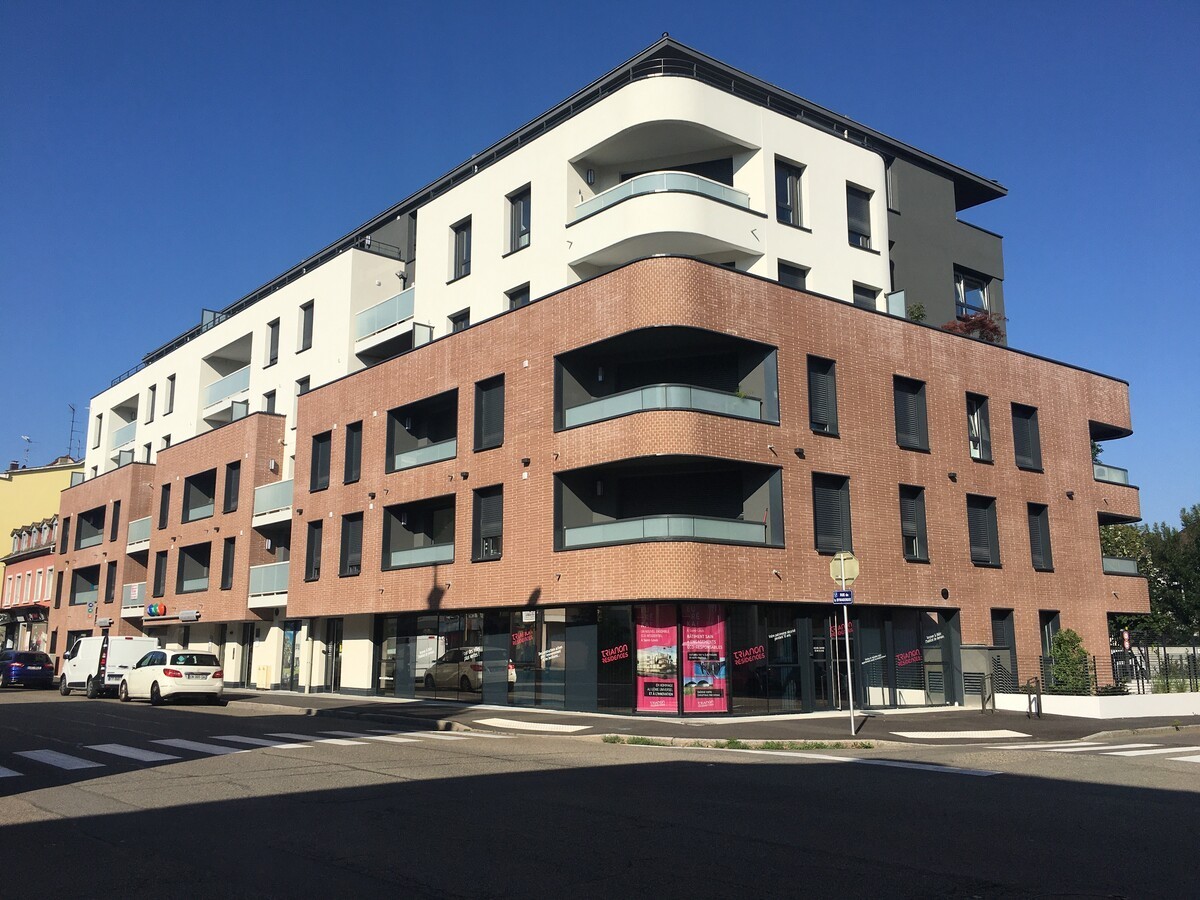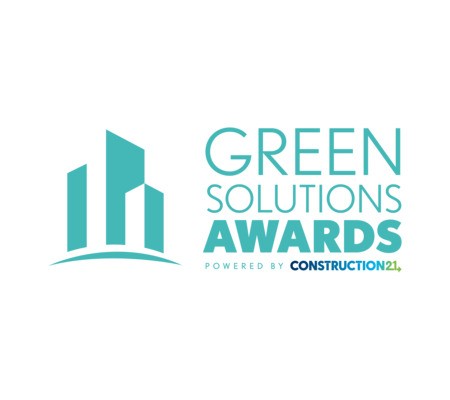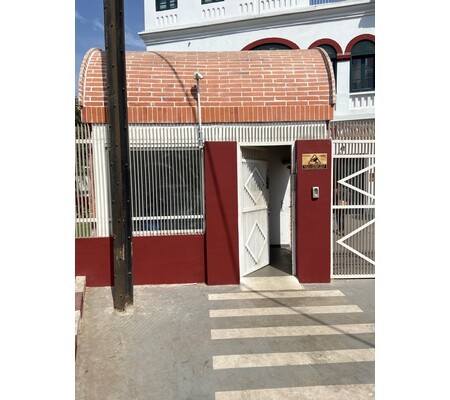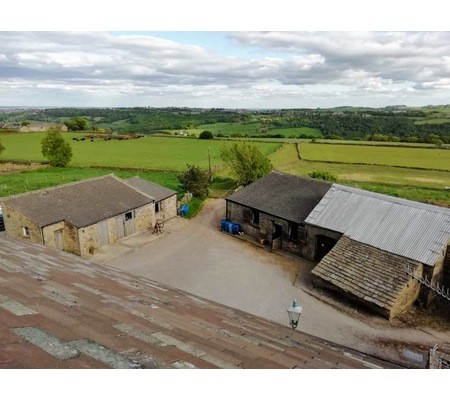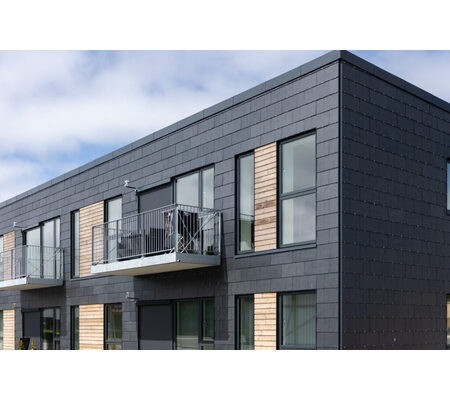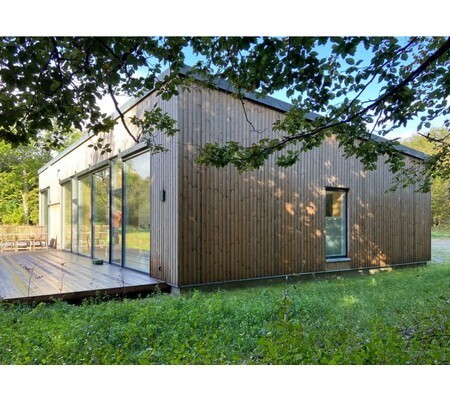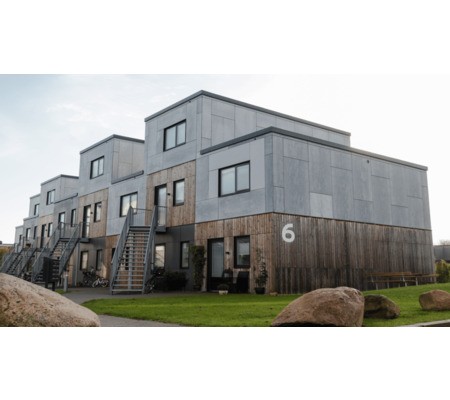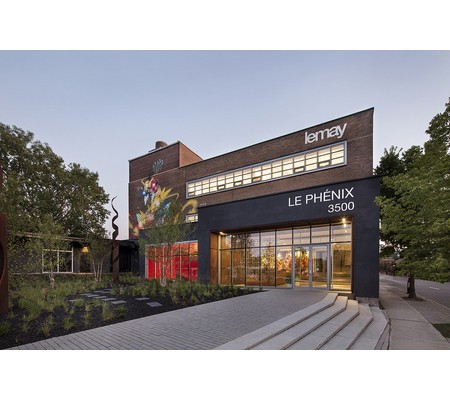Heart Déco Residence - a building with a depolluting facade
Last modified by the author on 18/10/2022 - 16:21
New Construction
- Building Type : Collective housing < 50m
- Construction Year : 2017
- Delivery year : 2021
- Address 1 - street : 22 rue de huningue 68300 SAINT-LOUIS, France
- Climate zone : [Cfb] Marine Mild Winter, warm summer, no dry season.
- Net Floor Area : 3 500 m2
- Construction/refurbishment cost : 4 800 000 €
- Number of Dwelling : 51 Dwelling
- Cost/m2 : 1371.43 €/m2
-
Primary energy need
83 kWhep/m2.an
(Calculation method : RT 2012 )
Case study proposed by Pôle Fibres Energivie as part of the Build & Connect conference.
"Today, the need for innovation, in a broad sense, both technical and social, is fundamental. A first contribution consists in striving to reduce the various environmental impacts of the residences built. A second part consists in developing an original and societal conception of collective housing. This is our challenge."
Cédric Simonin, CEO of Trianon Résidences
Designing the habitat of the future, this is the most ambitious mission that the Alsatian developer and builder Trianon Résidences has undertaken. In concrete terms, the company aims to promote innovation to design more sustainable and healthier buildings without losing quality of life.
The Heart Déco program, a residence of 51 apartments and an office space on the first floor in Saint-Louis (68), fits into this framework. The project's particularity is its façade, which is equipped with depolluting properties, thus being able to absorb polluting particles present in the air. This is a first for a residential building in France! The building is also remarkable for its energy performance and for the quality of the air inside its apartments.
The program was awarded the Silver Pyramid for Innovation at the regional level in 2019.
Innovation for ecology: a façade that purifies the air
The building's facade is made of cement bricks containing products formulated from TX Active® technology. This technology works according to the natural phenomenon of photocatalysis, absorbing the harmful substances and compounds created by human pollution and neutralizing them with light.
As a result, the facade is endowed with depolluting, self-cleaning and bactericidal properties, being able to absorb the equivalent of the pollution emitted by 20 cars in one year!
More information on the technology in the "Solutions" tab.
Commitments in favor of indoor air quality
Trianon Residences is working to improve the quality of the indoor air of the residences put on the market. To do so, the developer has gone beyond its responsibilities as a developer and is committed to ensuring that the homes do not contain traces of VOCs or allergens. Monitoring is performed throughout the project, from design to delivery, to ensure that these commitments are met.
A collaboration with specialists from the medical corps of the CHU of Strasbourg has made it possible to carry out a diagnosis of the impact of the various construction materials used on the quality of the indoor air and consequently on the health of the inhabitants. The materials were then mapped in such a way as to favor those with the least negative impact or those that are virtuous. For example, on this residence, plasterboard equipped with a depolluting technology. Designing well-ventilated homes also helps improve indoor air quality.
In terms of construction processes, a Green Building Charter has been set up. It is based on four major principles:
- Organization of site cleanliness;
- Optimization of waste management and sorting;
- Reduction of nuisance and pollution;
- Preservation of used resources.
Upon delivery of the program, a research firm tests the air to verify its quality on several parameters such as relative humidity, carbon dioxide or mold.
The developer also takes on an advisory role by providing a Good Housekeeping Guide to each resident. This guide raises awareness of the importance of good housekeeping for good air quality and impacts on well-being and health.
A building heated with renewable and local resources
The residence is connected to the local district heating system, of which 90% of the heat is produced by the combustion of biomass coming from a radius of less than 100 km: forestry chips, corn cobs, deconstruction wood, etc.
The advantages of this energy system are multiple:
- Valorization of local resources;
- Lower operating costs compared to conventional heating systems;
- Financial savings for the inhabitants;
- Preservation of air quality thanks to the filtration systems installed on the installations.
See more details about this project
https://www.construction21.org/france/articles/h/green-solutions-heart-deco-zoom-sur-un-programme-immobilier-vertueux.htmlPhoto credit
Trianon Résidences
Contractor
Construction Manager
Stakeholders
Assistance to the Contracting Authority
Trianon Résidences
https://www.trianon-residences.fr/Project owner and developer
Thermal consultancy agency
NRJ diags
https://nrjdiags.fr/Energy Performance Diagnosis / air tightness tests / thermal certificate at the end of the work
Company
Prevel Signalisation
03.89.65.52.07
Cartel work of art
Company
Giamberini & Guy
03.89.30.06.36
Earthworks
Company
Socoval
03.89.37.06.86 / info[a]socoval.fr
Structural works
Company
Werner
03.89.52.15.25
Electricity
Company
Stallini
03.89.33.58.90 / cschuller[a]stallini.fr
Heating / ventilation / sanitary
Company
Orly Arkedia
03.89.27.92.60
Wood structure
Company
Schoenenberger
Steel roofing / waterproofing / zinc plating
Structures calculist
SOCOTEC 68
03.89.36.30.20
Acoustic study / technical control
Other consultancy agency
Expert Gerard Coulombel
Expert in building
Other consultancy agency
Compétence Géotechnique 25
03.81.80.73.24 / france-comte[a]competence-geotechnique.fr
Geotechnical study
BESB - R.VONESCH
03.89.53.82.40 / contact[a]besb.fr
Thermal consultancy agency
Elithis Ingénierie
Fluid and energy design missions
Construction Manager
CARRE EST
03.89.317.317 / accueil.lutterbach[a]carre-habitat.com
Main contractor for the execution of the project
Other consultancy agency
AMS Ingénierie
Technical studies - VRD
Others
Qualiconsult Sécurité
SPS coordination
Other consultancy agency
Age Géomètres Experts
Surveyor missions
Contracting method
Separate batches
Type of market
Global performance contract
Energy consumption
- 83,00 kWhep/m2.an
Systems
- Urban network
- Urban network
- No cooling system
- Humidity sensitive Air Handling Unit (Hygro B
- No renewable energy systems
Urban environment
Product
De-polluting cement bricks
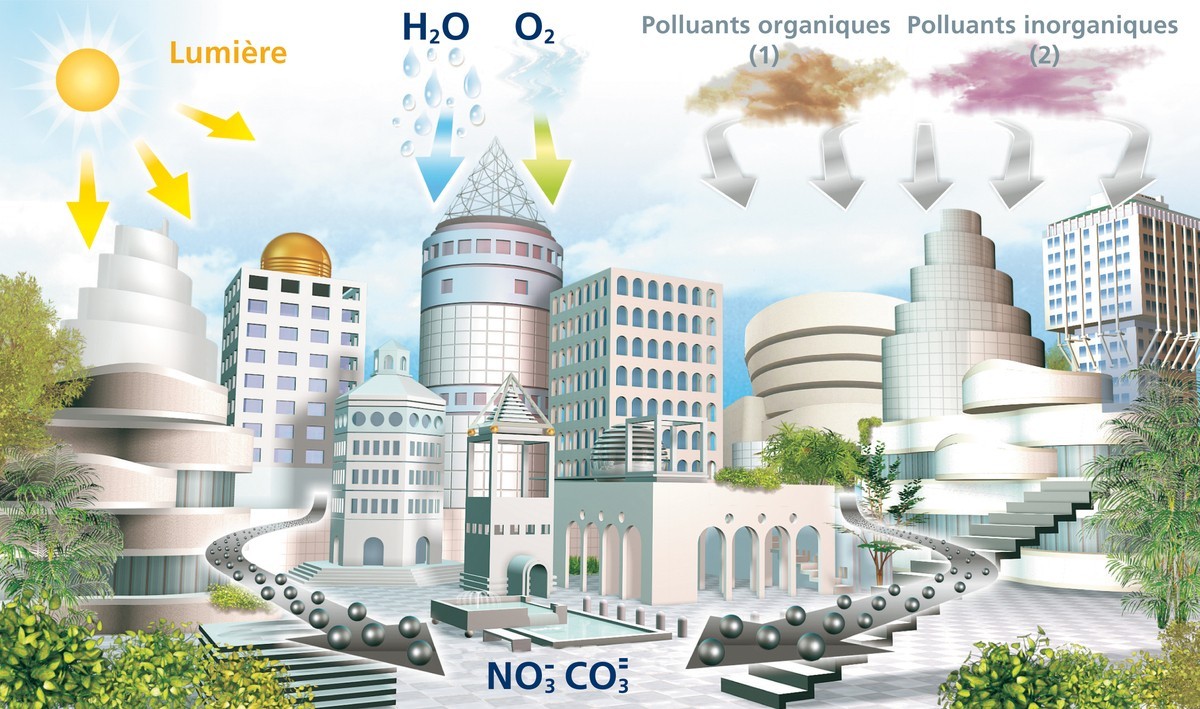
BlocStar
contact[a]blocstar.eu / 09.72.42.04.84
https://www.blocstar.fr/Structural work / Structure - Masonry - Facade
Based on TX Active® technology, the photocatalytic cement in these bricks absorbs organic and inorganic pollutants from the air and neutralizes their harmful properties. It accelerates the natural oxidation process that breaks down pollutants.
In addition, it protects coatings from pollutant stains, thus preserving the aesthetics of the façade in the long term. It also reduces maintenance costs and needs.
This technology has been developed for more than 24 years, in technical partnership with the CSTB (Centre Scientifique et Technique du Bâtiment) and the CERIB (Centre d'Etudes et de Recherche de l'Industrie du Béton). The products are CE standardized and NF labeled.
The bricks can be adapted to the desired rendering of the facade, so they do not affect the aesthetics of the building.
This product is now available in all types of concrete and mortar for structural and non-structural use, for a wide variety of uses.
Plaster pannels - KNAUF KS 13 CLEANEO C
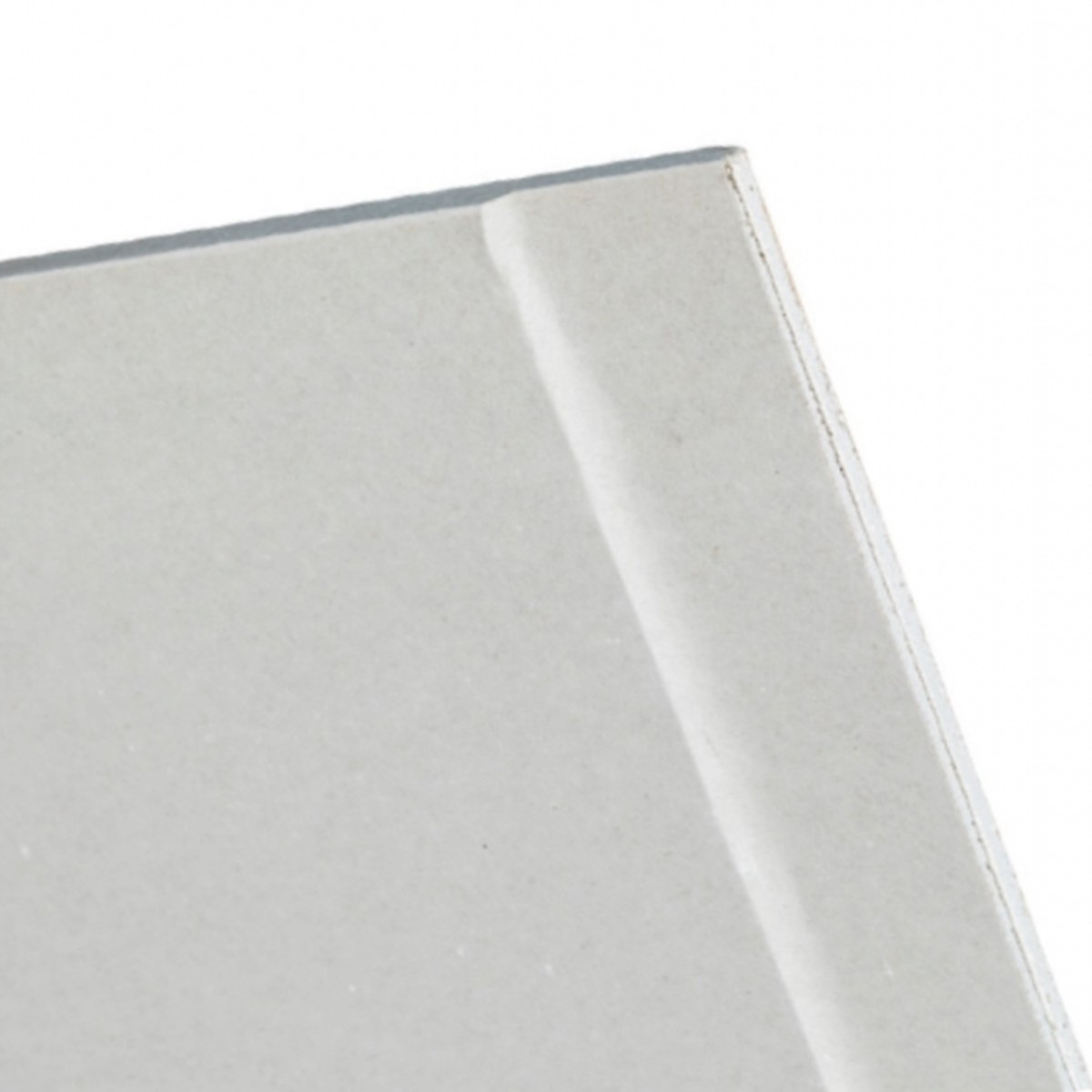
KNAUF
https://www.knauf.fr/
These panels are equipped with Cleaneo technology, which gives them depolluting properties with respect to formaldehyde and thus improves indoor air quality.
Construction and exploitation costs
- 4 800 000 €
Indoor Air quality
Comfort
Reasons for participating in the competition(s)
- 1er bâtiment d'habitation à la façade dépolluante de France ;
- Une technologie novatrice pour réduire la pollution en ville ;
- Les logements sont raccordés au chauffage urbain local dont 90% de la chaleur est produite par la combustion d'une biomasse provenant d'un rayon de moins de 100 km ;
- Une démarche de recherche pour améliorer la qualité de l'air intérieur dans le cadre bâti ;
- Un projet collaboratif entre acteurs privés et publics.
Building candidate in the category





